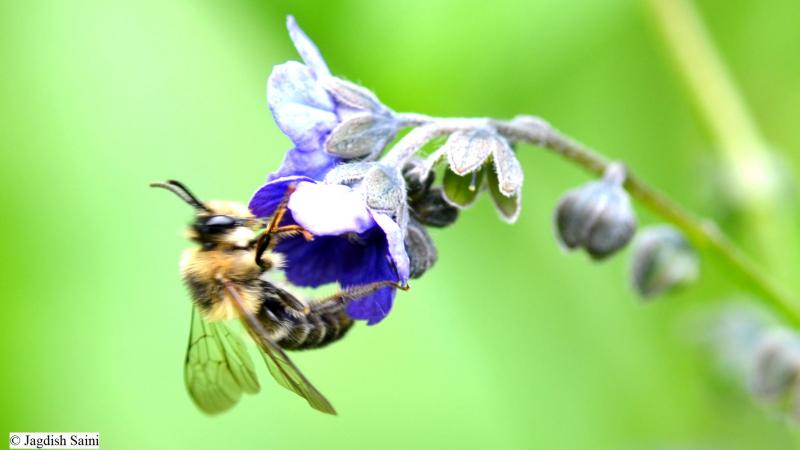
The Valley of Flowers National Park in Uttarakhand is renowned for its meadows of alpine flowers. The snow-clad mountains come to life with vividly coloured flowers and with them come the bees. When a group of researchers from the Zoological Survey of India (ZSI) visited this park, they discovered a new species of bees from the genus Melitta. They have named it Melitta indica.
“When I captured this specimen, I understood this to be an interesting one,” recollects Dr Jagdish Saini on this discovery in an interview with Research Matters. Melitta indica is the fourth species reported from India belonging to the genus Melitta. Bees of this genus are distributed across Jammu and Kashmir, Sikkim, parts of Himachal Pradesh and Uttarakhand. So far, about 50 species of Melitta genus have been reported from all over the world.
With the current study, the researchers have added new knowledge about Melitta bees from India. "The specimen, from which the three previously-known species description are made, were not available in Indian museums. That's why we never saw the genus Melitta before this discovery," says Dr Saini. The study, published in the journal Oriental Insects, was funded by the Ministry of Environment, Forest and Climate Change, Government of India.
Scientists use subtle physical cues in the body of the insects to identify its species. They look for structural characteristics in the head, thorax, abdomen and other facial features. In bees, females have 10 antennal segments, whereas males have 11. In the current study, the researchers identified Melitta indica as a new species by looking at the differences between this and other Melitta bees found in India.
Melitta indica has a jaw that is smaller than its eyes and the space next to the jaw, called ‘malar space’, is shorter than M. harrietae. It has black-coloured hair at the 4th and 5th segments of the upper abdomen. The vein from base of the wing (M) meets the radiating vein (Rs), (as Rs+M) adjacent to the margin of the wing, whereas the closely related M. cameroni has Rs+M appearing a little farther from the margin. The 7th lower abdomen segment in this bee is pointed with lower bent genitalia. The specimen that the researchers collected is a male with a black-skinned body. It has a shiny pointed head and eight segments in the lower abdomen.
The discovery of Melitta indica not only provides the first-ever Melitta specimens for Indian researchers to understand this genus better but also hints at the biodiversity of bees lurking in the country.
“There are more than 20,000 species of bees known globally and more than 750 species present in India. However, many more remain to be discovered. M. indica being restricted to high altitude, is an efficient high-altitude pollinator ,” signs off Dr Saini.
This article has been run past the researchers, whose work is covered, to ensure accuracy.





